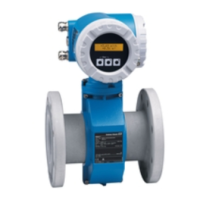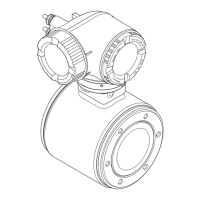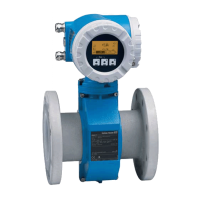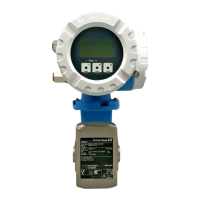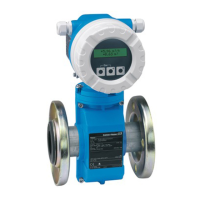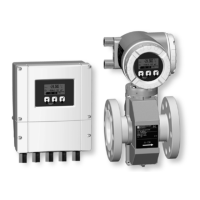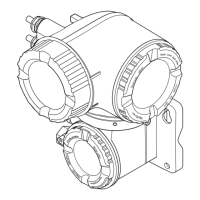Note!
Dismantling the electrode
1. Loosen the Allen screw (a)
and remove the cover.
2. Unscrew the electrode cable (c)
attached to the rotary arm (b).
3. Undo the knurled nut (d) by hand.
This nut is used as a counter nut.
4. Remove the electrode (e) using
the rotary arm (b). This can now be
taken out from the holder (g) as far
as the stop allows.
Warning!
Danger of injury! Under
process condition (piping
under pressure) the electrode
can spring back to the stop.
Keep pressing against it while
loosening.
5. Close the shut-off valve (f) after the
electrode has been taken out as far
as the stop.
Warning!
Do not attempt to open the
shut-off valve. Keeping it shut
prevents fluid from escaping.
6. Unscrew the entire electrode along
with the holding cylinder (g).
7. Remove the rotary arm (b) from
the electrode (e), while pressing to
remove the locking pin (h).
Take care not to lose the coil spring (k).
8. Replace the old electrode with a new
electrode.
A set of replacement electrodes can be
ordered from Endress+Hauser.
Assembling the electrode
1. Slide the new electrode (e) into
the holding cylinder (g) from below.
Ensure that gaskets at the tip of the
electrode are clean.
2. Put the rotary arm (b) on the
electrode and secure with the
locking pin (h).
Caution!
Ensure that the coil spring
(k) is in place. This
ensures close electrical
contact and thus reliable
measuring signals.
3. Pull back the electrode as far as
possible so that the tip does not
protrude out from the holding
cylinder (g).
4. Screw the holding cylinder onto
the shut-off unit (i) and thighten
by hand. Gasket (j) on the holding
cylinder must be in place and clean.
Note!
Ensure that the rubber
tubes on the holding
cylinder (g) and shut-off
valve (f) have the same
colour (red or blue)
5. Open the shut-off valve (f) and
screw in the electrode using the
rotary arm (b) until the stop.
6. Screw the knurled nut (d) onto the
holding cylinder. This clamps the
electrode tight.
7. Screw the electrode cable (c) to the
rotary arm (b) using the Allen screw.
Caution!
Ensure that the Allen
screw of the electrode
cable is tight. This ensures
close electrical contact and thus
reliable measuring signals.
8. Replace the cover and tighten
the Allen screw (a).
Caution!
Warning!
Warning!
Caution!
Promag 33 7 Trouble-shooting, Maintenance and Repairs
Endress+Hauser 95
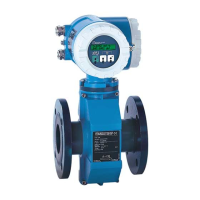
